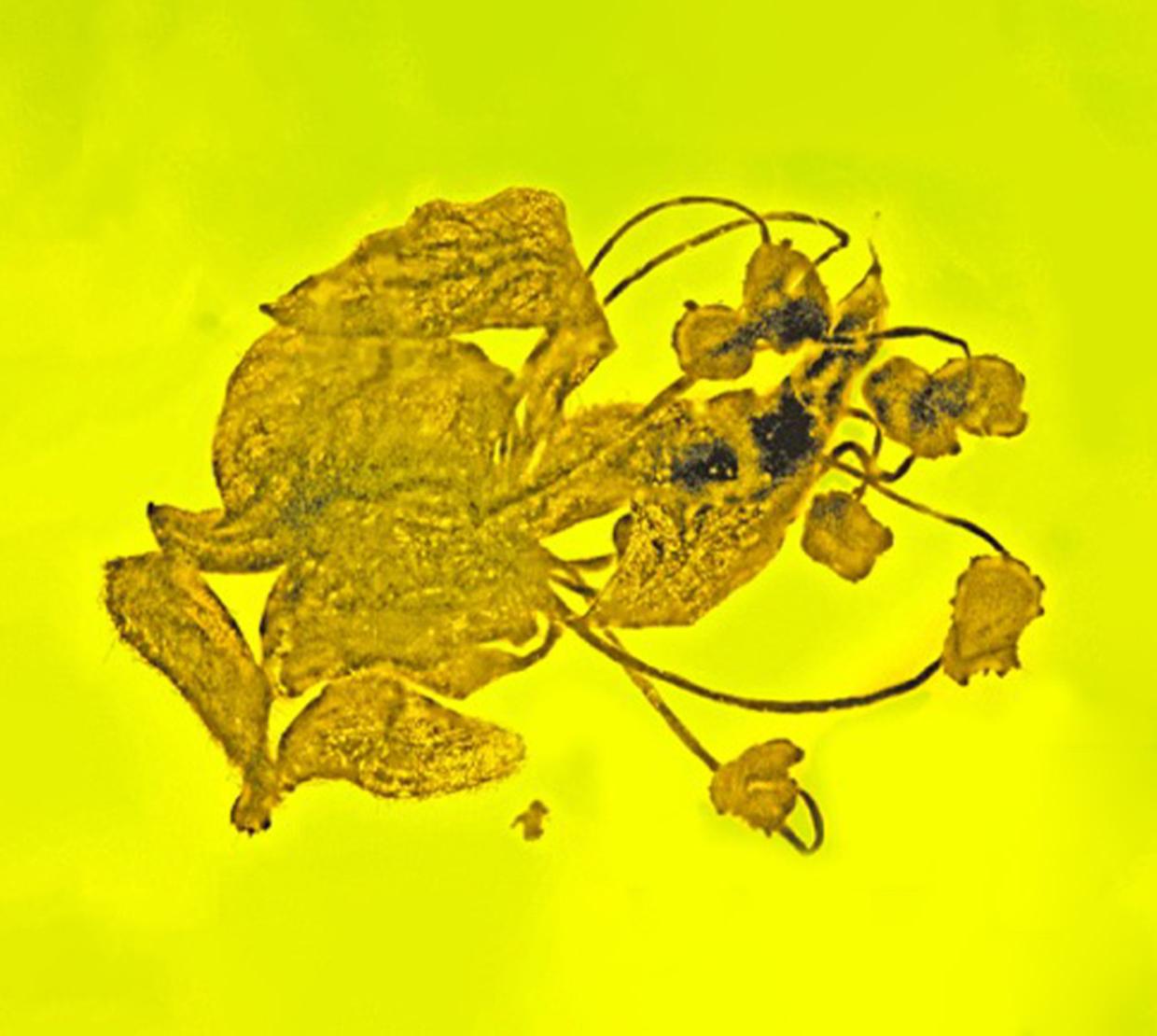New collaborative research has described a novel legume tree from flowers embedded in several lumps of amber recovered from deep within a mine in the mountains of the Dominican Republic.
George Poinar Jr., professor emeritus in the Department of Integrative Biology, and Kenton Chambers of the College of Agricultural Sciences placed the 20- to 30-million-year-old flowers in a novel genus and species, Salpinganthium hispaniolanum, in the family Fabaceae.
“The flowers are quite striking with their spreading sepals and petals, along with the 10 extended stamens,” said Poinar, an international expert in using plant and animal life forms preserved in amber to learn about the biology and ecology of the distant past. “While now darkened with age, the petals were probably white, yellow or even pink, which are the petal colors of the closely related purpleheart tree, whose strong, durable, purplish wood is prized by artists, ship builders, furniture makers and other crafts people.”
“While purpleheart trees are still with us, Salpinganthium trees have disappeared,” said Poinar. “We can only speculate about why these fossil trees have become extinct.”
They could have succumbed to some unique biological and/or physical events, such as the loss of a pollinator, presence of a pathogen or climatic change that ravaged populations throughout their entire range, Poinar said.
Read the full story here.




